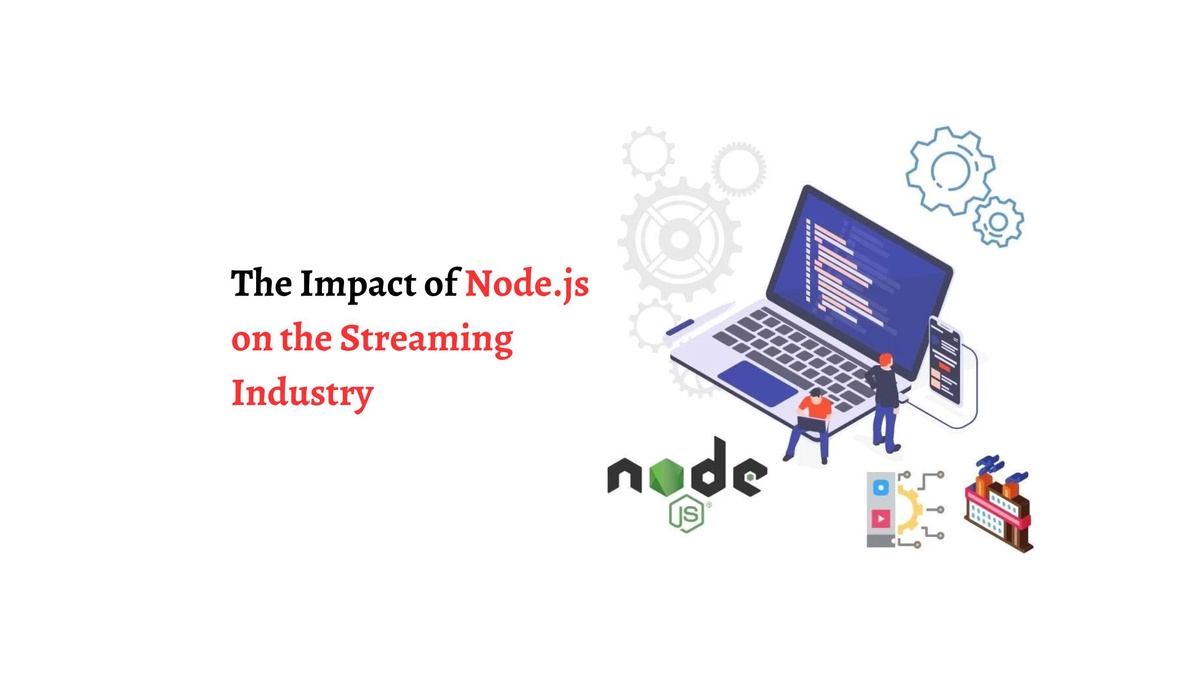The demand for applications seamlessly processing and delivering data in real-time has become paramount in the ever-evolving web development landscape. Node.js, with its asynchronous and non-blocking architecture, stands at the forefront of this paradigm shift, offering robust support for streaming applications. Node.js app development services efficiently handle large datasets by processing data in smaller, manageable chunks, thus optimizing memory usage and enhancing overall performance. This introductory exploration delves into the core aspects of how Node.js embraces streaming, from its asynchronous nature and memory efficiency to the various types of streams it provides and the diverse use cases that leverage its streaming capabilities. Understanding these fundamental features lays the foundation for harnessing the full potential of Node.js in the dynamic realm of streaming applications.
Asynchronous and Non-blocking Architecture
Node.js is renowned for its asynchronous and non-blocking architecture, making it a powerful platform for handling streaming applications. Traditional synchronous programming models can encounter challenges when dealing with large datasets. In a synchronous system, the application waits for a task to complete before moving on to the next one. In contrast, Node.js leverages an event-driven, non-blocking approach, allowing it to execute multiple tasks concurrently.
This asynchronous nature is particularly advantageous for streaming applications. Instead of waiting for the entire dataset to be processed, Node.js can efficiently handle data in chunks, providing a smoother and more responsive experience.
Efficient Memory Usage
Streaming large amounts of data can be memory-intensive, and Node.js addresses this concern with its stream implementation. Rather than loading the entire dataset into memory, Node.js processes data in smaller, manageable chunks. This chunk-by-chunk approach allows applications to handle massive datasets without causing memory overflow or slowing down the system.
The efficiency in memory usage is especially crucial for applications dealing with real-time data processing, where responsiveness and resource optimization are paramount. Node.js' ability to work with data in a streaming fashion contributes to its scalability and performance.
Types of Streams in Node.js
Node.js offers various types of streams, each serving a specific purpose in streaming applications:
Readable Streams: These streams allow the application to read data from a source in a chunked manner. Whether it's reading from a file, receiving data from an HTTP request, or another source, readable streams efficiently handle data in smaller portions.
Writable Streams: On the flip side, writable streams enable the application to write data in chunks. This is particularly beneficial when dealing with large datasets that can be sent or stored in smaller, more manageable pieces.
Duplex Streams: Duplex streams represent streams that are both readable and writable. This bidirectional flow of data is useful in scenarios where interaction with both input and output streams is required.
Transform Streams: Transform streams are a specific type of duplex stream where the output is computed based on the input. This dynamic transformation capability is particularly handy for tasks such as data compression or encryption.
Use Cases for Streaming in Node.js
Streaming in Node.js finds application in a wide array of scenarios, showcasing its versatility and adaptability:
File Processing: Node.js is proficient in efficiently reading and writing large files, making it a go-to choice for applications that involve extensive file processing.
Real-time Analytics: For applications requiring the processing and analysis of data in real-time, such as monitoring user activity or tracking system performance, Node.js' streaming capabilities provide a competitive edge.
Media Streaming: Node.js is well-suited for serving audio or video content over the web in a continuous manner. This is particularly relevant in the context of online platforms delivering multimedia content.
Data Transformation: Streaming is instrumental in scenarios where on-the-fly data transformations are needed, such as compressing or encrypting data during transmission.
Conclusion
Node.js' support for streaming applications is deeply rooted in its asynchronous and non-blocking architecture, efficient memory usage, and the versatility offered by its various stream types. Only an experienced node.js app development company understands the intricacies of using Node.js appropriately in project development and supports project specific requirements where real-time communication, data transfer, scalability, and performance are paramount for a business's success.


No comments yet